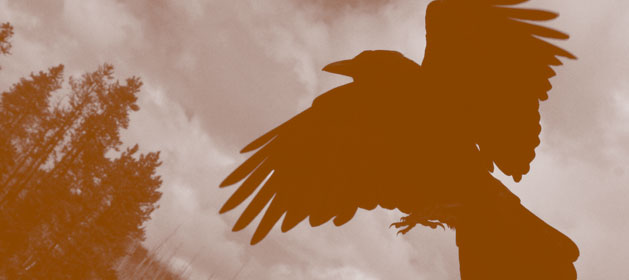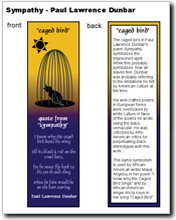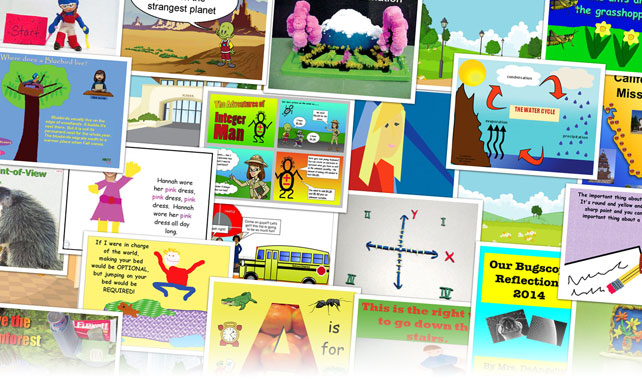

Throughout literature and poetry, authors use symbolism to create various effects and to evoke emotion. Symbolism helps us visualize events in a story and understand a character’s feelings. To help get readers to consider the symbolism in what they are reading, you will design a symbolism bookmark.
Hold a class discussion about the role of symbols in literature. Why do authors use symbols? What do symbols convey? Ask students why they think symbols are a powerful literary device.
Next, have each student read the Edgar Allen Poe poem “The Raven.” Then, read the poem out loud to the entire class and discuss the symbolism in it.
Share with students that the loneliness and hopelessness in the poem are felt by everyone at some time or another. The raven helps us feel empathy for the subject of the poem.
You could also read Paul Lawrence Dunbar’s “Sympathy” and compare it to both Maya Angelou's I Know Why the Caged Bird Sings and the lyrics to Alicia Key’s Caged Bird. Ask your students to share their explanations of why the author used the “caged bird” symbolism.
Have students choose a symbol in a poem or literary work that they have studied this school year. If you are confident in their skills, have them explore online resources to find symbolism in a new piece of literature.
Have students choose one part of the literary work that best represents the use of symbolism. Students use Wixie or Share to create the front and back of a bookmark that includes images that convey the ideas and mood suggested by the symbolism as well as an explanation of what the symbolism means and how it affects the work.
If using Share, have students choose Custom dimensions for the project and set the size to 2” x 6” which is a standard size for bookmarks.
The front of the bookmark should include:
The back of the bookmark should include an explanation of what the symbolism means and how it affects the work.
Have each student print a copy of his or her bookmark without his or her name. When students turn them in, be sure to log which student created which bookmark.
Divide students into small groups. Give each group a small collection of completed bookmarks. Have each team work together to complete one Bookmark It Evaluation for each example. Collect their responses and add them to your assessment before returning the bookmarks to students.
Have students print several copies of their bookmarks on card stock, cut out each side, and glue them together. Then, place them in the library as giveaways for other students to use.
Bookmarks are not too expensive to print. You might be able to get a grant or PTA donation to print copies of the top 3 bookmark designs. If students have created 2” x 6” bookmarks, they can simply export each side as an image and submit to an online printing company like PrintRunner.

As you complete a summative assessment on the bookmark design, evaluate (1) the appropriateness and effectiveness of their pictorial representations of the symbol, (2) the appropriateness of their quotes as a representation of the symbolism, and (3) the explanation of how the symbolism is used in the work.
Bierderman, Hans, and Hulbert, James. Dictionary of Symbolism: Cultural Icons and the Meanings Behind Them. ISBN: 0452011183
Gibson, Michael, and Neret, Gilles. Symbolism ISBN: 3822850322
Symbols and Symbolism http://www.fiu.edu/~morriss/bookword/symbols/symbolism1.html
The Gutenberg Project gutenberg.org
Bartleby Poetry http://www.bartleby.com/verse/
Literacy Standards
Demonstrate understanding of figurative language, word relationships, and nuances in word meanings
5. Interpret figures of speech (e.g., literary, biblical, and mythological allusions) in context.
Writing Standards
Research to Build and Present Knowledge
7. Conduct short as well as more sustained research projects based on focused questions, demonstrating understanding of the subject under investigation.
Language Standards
4. Determine or clarify the meaning of unknown and multiple-meaning words and phrases by using context clues, analyzing meaningful word parts, and consulting general and specialized reference materials, as appropriate.
6. Creative Communicator
Students communicate clearly and express themselves creatively for a variety of purposes using the platforms, tools, styles, formats and digital media appropriate to their goals. Students:
a. choose the appropriate platforms and tools for meeting the desired objectives of their creation or communication.
b. create original works or responsibly repurpose or remix digital resources into new creations.
d. publish or present content that customizes the message and medium for their intended audiences.

Follow us on Instagram for daily inspiration

Create a thought web, timeline, flowchart, or other graphic organizer for a lesson

What can your students create?

Wixie
Share your ideas, imagination, and understanding through writing, art, voice, and video.

Rubric Maker
Create custom rubrics for your classroom.

Pics4Learning
A curated, copyright-friendly image library that is safe and free for education.

Wriddle
Write, record, and illustrate a sentence.
Topics